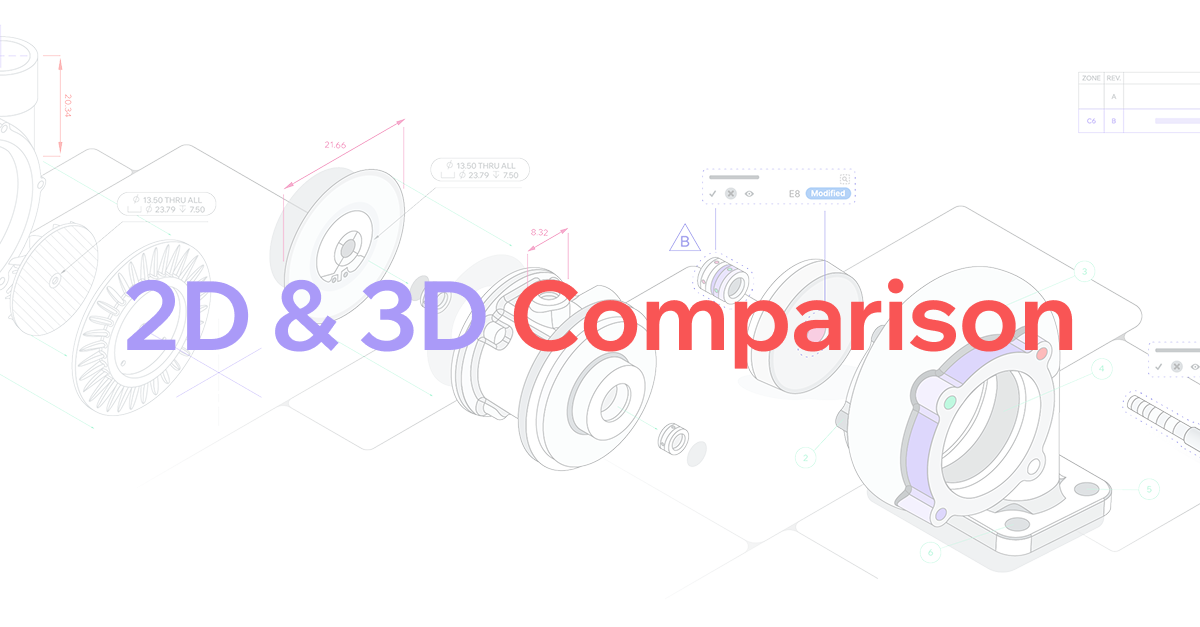In the fast-paced world of mechanical engineering, artificial intelligence (AI) is transforming how teams design, validate, and collaborate on products. From predictive design to automated quality checks, AI tools are now essential for engineers who want to stay competitive.
Here are the four best AI-powered tools mechanical engineers should know.
1. bananaz AI - The AI Copilot For Mechanical Engineers
bananaz AI supercharges CAD software. Designed as an AI copilot for mechanical engineers, it enhances design, review, and collaboration, making every stage of the process faster and smarter.
Powered by cutting-edge computer vision algorithms and advanced language models (LLMs), bananaz transforms how teams manage and review 2D and 3D models.
bananaz integrates seamlessly with existing CAD and PDM and PLM tools (like SOLIDWORKS or Creo), allowing teams to process multiple CAD file types without being locked into a single system. This flexibility empowers organizations to collaborate freely across platforms while maintaining full data integrity.
Key AI Features:
- Get real-time AI insights on model quality, design context, and history - bananaz continuously analyzes 3D models to evaluate the design features, geometry quality, and compliance with company standards. It highlights potential issues and provides context-driven insights to help engineers make smarter design decisions. In addition, teams can detect inconsistencies or risks early in the development cycle. These insights empower engineers to produce cleaner, higher quality designs with fewer iterations.
- Detect design changes instantly between versions - bananaz uses advanced computer vision to automatically identify even the smallest differences between 2D drawings or 3D models. Instead of manually comparing revisions, engineers get instant, visual insights into what has changed and why. This dramatically reduces review time and helps teams catch costly errors before they reach production. By automating change detection, teams can maintain full visibility and traceability throughout the design process.
- Automate review and approval workflows - The platform streamlines how design reviews and approvals are managed across engineering teams. Route models and drawings to the right stakeholders, tracks feedback, and ensures every change is properly documented. This eliminates bottlenecks and miscommunication that often delay product development. The result is a faster, more organized, and fully auditable approval process.
- Collaborate securely across teams and time zones - bananaz enables seamless collaboration between engineers, designers, and managers no matter where they are. The platform centralizes design data and communication in a secure environment, ensuring version control and data protection. Teams can review, comment, and approve designs in real time, staying aligned throughout every stage of development. This global connectivity helps distributed teams move faster while maintaining accuracy and security.
Why it stands out:
bananaz brings AI-driven intelligence directly into your engineering workflow - reducing errors, improving quality, and accelerating time to market.
For mechanical engineers, it’s not just another tool - it’s the AI layer your CAD system was missing.
2. SOLIDWORKS AI - Smart Design Assistance for Every Engineer
SOLIDWORKS, one of the most popular CAD platforms, has recently introduced AI-driven features that make product design smarter and faster.
Using AI-assisted commands, smart mates, and command prediction, SOLIDWORKS now helps users anticipate design steps, suggest constraints, and automate repetitive tasks.
The new AURA AI assistant (part of the 3DEXPERIENCE platform) offers conversational guidance, helping engineers improve workflows, reduce design time, and ensure model consistency.
Key AI Features:
- Predictive design suggestions - SOLIDWORKS AI analyzes design patterns and automatically suggests the next logical steps or features to add. This helps engineers work faster and reduces repetitive manual input by anticipating what you’re likely to do next.
- Automatic dimensioning & constraint detection - identify geometric relationships and apply the correct dimensions or constraints without manual setup. This ensures models are fully defined and consistent, saving valuable time during the sketching and modeling process.
- Conversational design assistant (AURA) - acts as an interactive AI assistant that engineers can chat with directly inside SOLIDWORKS. It provides real-time guidance, helps troubleshoot design challenges, and recommends best practices to improve model quality and efficiency.
Best for: Engineers using 3DX SOLIDWORKS who want to speed up daily design tasks without changing their workflow.
3. PTC Creo AI - Generative Design Meets Optimization
PTC Creo integrates AI-driven generative design that automatically explores thousands of potential geometries based on defined goals and constraints.
Engineers can focus on performance and innovation while the AI handles geometry optimization and simulation-driven refinement. PTC’s AI also assists in part recognition, assembly management, and real-time simulation prediction.
Key AI Features:
- Constraint-based Generative design and optimization - automatically explores thousands of geometry variations based on performance goals, materials, and design constraints. It helps identify the most efficient and lightweight design that meets functional requirements without manual iteration.
- Automated geometry simplification - The AI recognizes unnecessary details or complex features in 3D models and simplifies them automatically for faster analysis and simulation. This improves computational efficiency and ensures smoother performance when working with large assemblies or complex geometries.
- Integrated AI powered simulation - predict performance outcomes and optimize designs in real time. Engineers can validate their models faster, detect potential issues early, and make smarter design decisions with AI guided insights.
Best for: Creo using teams prioritizing innovation and product performance using parametric modeling workflows.
4. Autodesk Fusion AI - Cloud-Powered Design Intelligence
Autodesk Fusion leverages cloud computing and AI to empower engineers with smart automation tools.
From topology optimization to machine learning based manufacturability checks, Fusion ensures designs are lightweight, efficient, and ready for production.
Autodesk’s “Autodesk AI” suite includes predictive insights across the entire product lifecycle - from concept to CAM.
Key AI Features:
- Generative design automation - Fusion AI automatically generates multiple optimized design alternatives based on user-defined goals, materials, and constraints. This allows engineers to explore a wide range of innovative geometries while ensuring strength, efficiency, and manufacturability.
- Machine learning-driven manufacturability analysis - analyze models to detect potential manufacturing challenges before production begins. It provides real-time feedback and recommendations, helping engineers refine designs to reduce costs and production time.
- AI-enhanced simulation and visualization - Fusion integrates AI to predict real world performance and visualize design behavior under different conditions. This accelerates the validation process, improves accuracy, and helps engineers make informed decisions early in the design cycle.
Best for: Autodesk Fusion users seeking all in one cloud CAD/CAM/CAE solutions.
5. Siemens NX AI - Predictive Design for Complex Engineering
Siemens NX integrates AI and machine learning to enable predictive modeling, feature recognition and automated design validation.
The AI learns from user patterns and design history to anticipate modeling needs, while Siemens’ Generative Design Explorer automates concept creation for complex assemblies.
Key AI Features:
- Pattern and feature recognition - NX AI automatically detects recurring design patterns, features, and components across models and assemblies. This enables engineers to reuse proven design elements, maintain consistency, and accelerate the modeling process.
- Predictive modeling & design rule automation - The system learns from user behavior and company design standards to anticipate modeling steps and enforce design rules automatically. This reduces human error, ensures compliance, and streamlines complex design workflows.
- AI-based generative design tools - NX integrates advanced AI algorithms to generate optimized design concepts based on performance goals, materials, and constraints. Engineers can explore innovative solutions faster, achieving better balance between functionality, manufacturability, and cost.
Best for: Siemens NX Users Large scale mechanical projects requiring intelligent automation and digital twin integration.
Final Thoughts
AI isn’t the future of mechanical engineering - it’s the present.
If you want to supercharge your design process, start by unlocking AI in your current CAD tools and pairing them with bananaz AI as your design validation and collaboration copilot.


.png)

.png)

